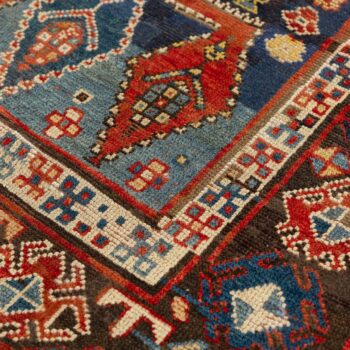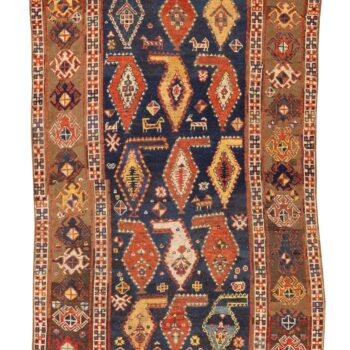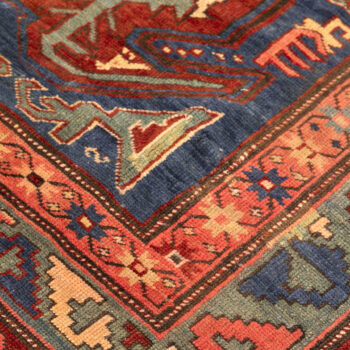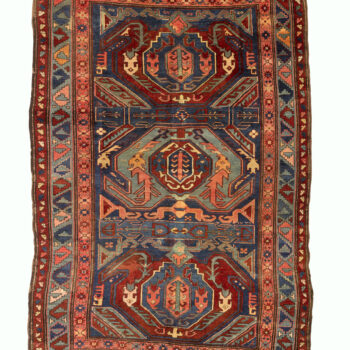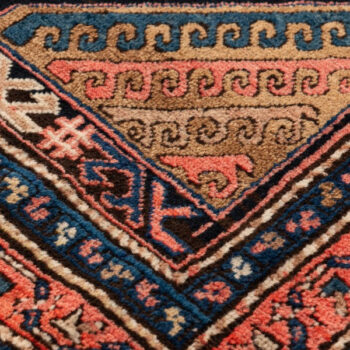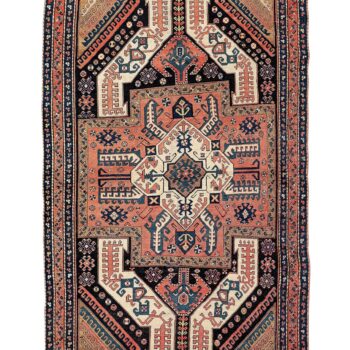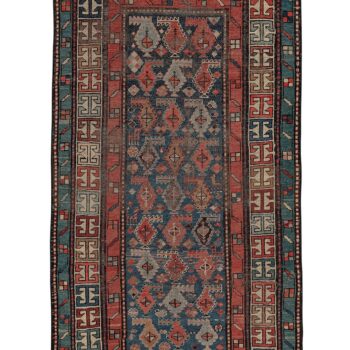Karabagh
Karabagh rugs originate from a mountainous region inhabited by people of different cultures since the 17th century. Karabagh is located in southern Caucasus known today as Eastern Armenia, Southwestern Azerbaijan. The population is mainly composed of Armenians and Azerbaijani Turks. In the larger cities of mountainous Karabagh, the population is mainly Armenian. As the region is divided between Armenia and Azerbaijan, as well as between Muslims and Christians, and mountains and plains, the war between these groups have a long sad history.
Geographical and population differences contributed to the rugs being classified into several design categories: the “village”, is similar to the rich colored Kazaks with large medallions and tribal geometric accents; the “city”, influenced by classical Persian rug styles, and Russian designs, with realistic floral ornaments related to Aubusson and Savonnerie rugs, appealed to western countries.
Karabagh designs have either a medallion or allover patterns. Traditional Persian floral designs were greatly used in the city of Susha. In the early 19th century, Susha workshops started to make allover patterns of rose bouquets or oval-shaped medallions with French flower bouquets. This fashionable design complemented the French furnishings favored by the Russian royals and nobles.


Geometric nomadic designs were woven mainly in scattered villages of Chan Karabagh, Chelarbed, Chondzoresk, and Goradis. The village of Chelarbed produced rugs called Eagle Kazak, which today is one of the most well-known and important Caucasian rug in the antique market. The village of Chondzoresk is famous for the Cloudband Kazak which is also valuable in the trade. Kurd carpets have played an important part in the weaving tradition of the region. The famous Kasim Ushag design was made by Kurd weavers in Karabagh. Armenian inscriptions, Christian and Islamic dates can be found in some Karabagh rugs.
But whatever the pattern, Karabaghs represent the best in quality and design among antique Caucasian rug styles. They have a distinct double weave that is made between every two rows. The antique rugs created in the Karabagh area have a unique feel depending on where they are woven. Artists from the Lenkoran, Talish and Moghan regions specialized in creating long Karabagh rugs. This shape fits well in long and narrow spaces such as hallways. The Eastern Karabagh area is known for its production of rugs with light blue wool and woven cotton wefts.

Figalli Oriental Rugs
We do not sell rugs. We bring rare works of art to your home in the form of rugs.
Our services
You are Protected
Copyright © 2023 Figalli Oriental Rugs, All rights reserved. Desenvolvido por Agência DLB – Agência de Marketing Digital em Porto Alegre

